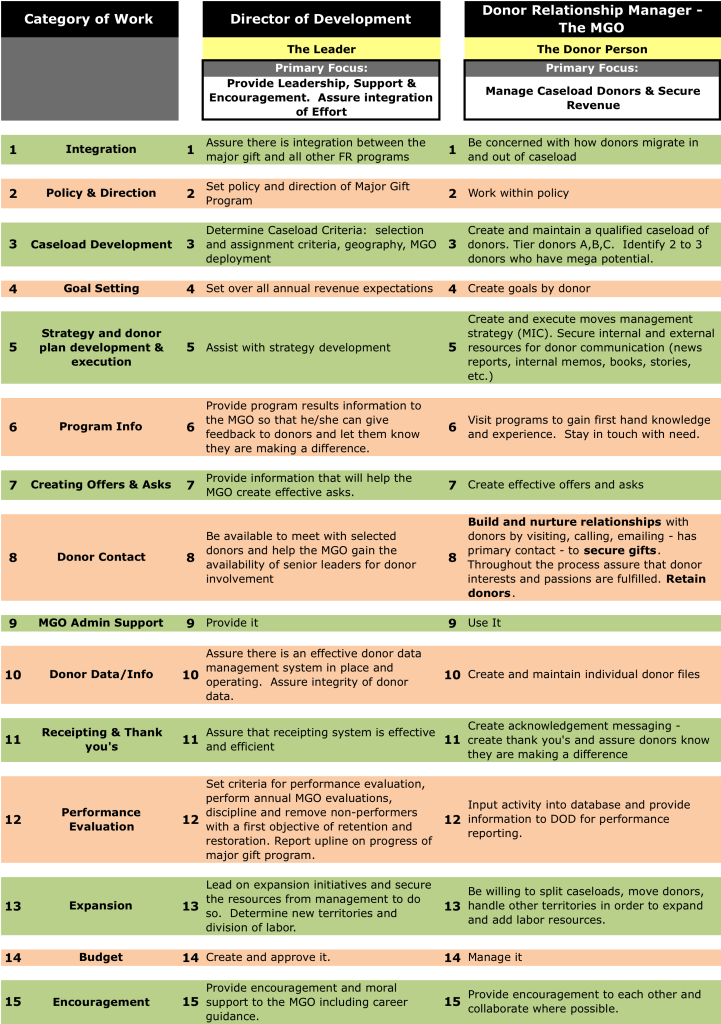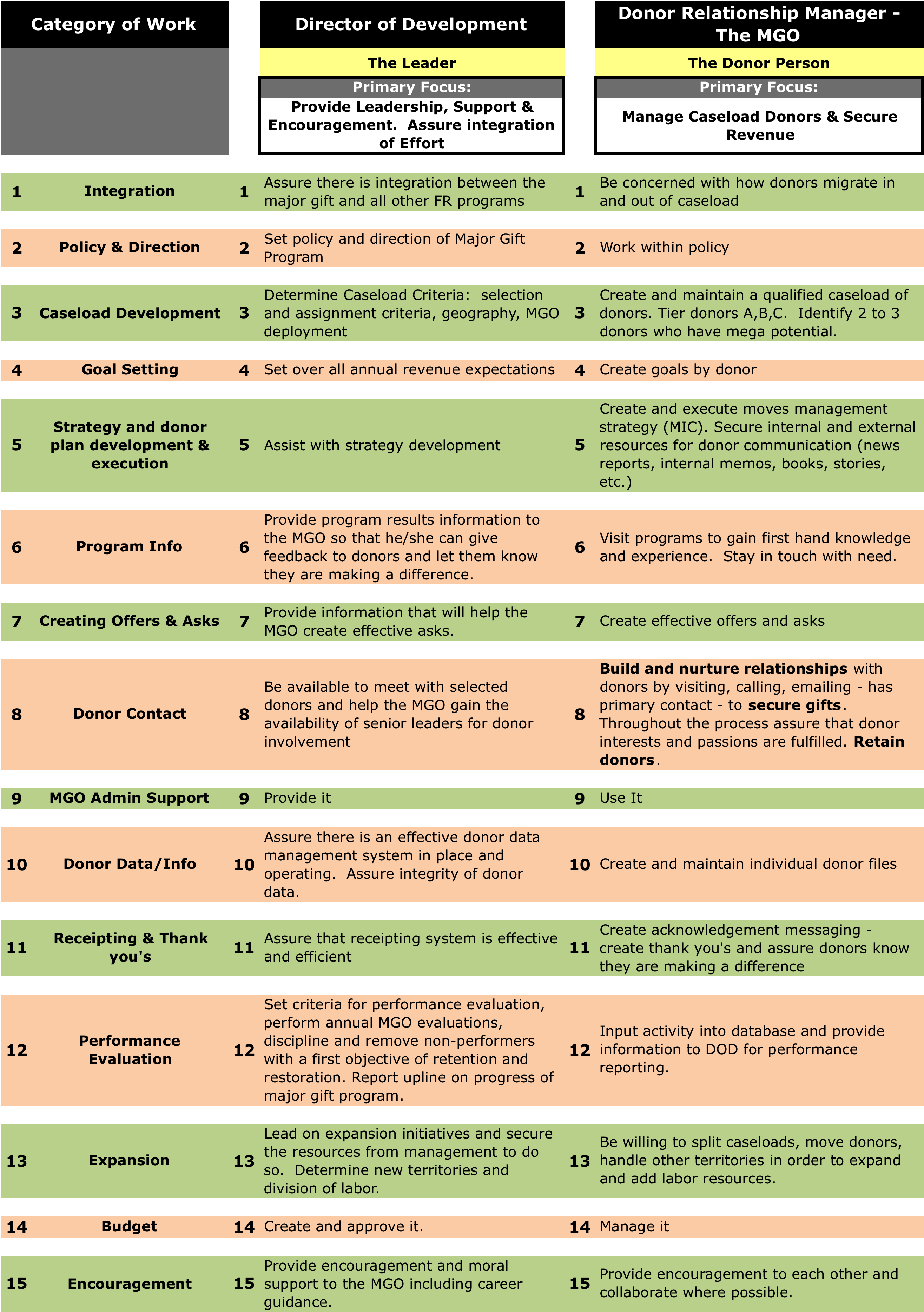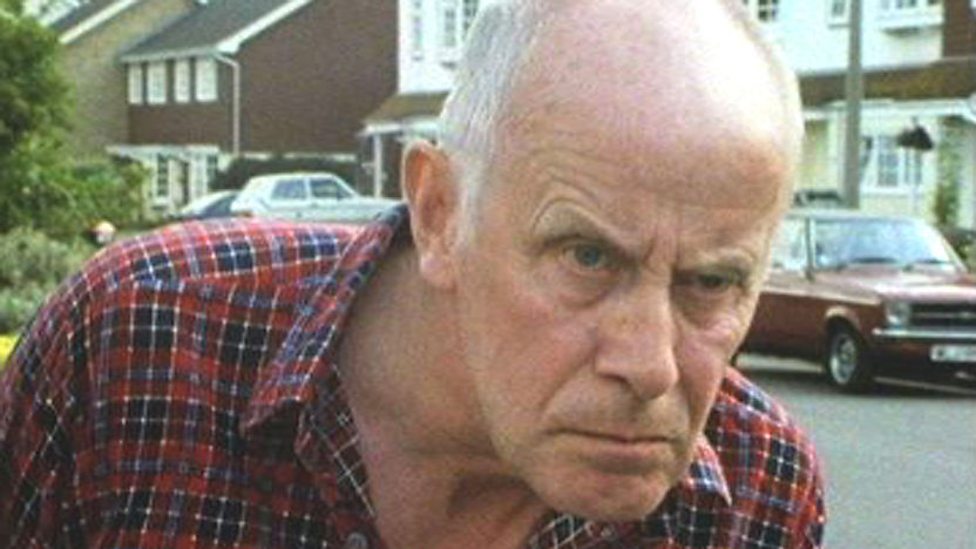We are often asked our opinion on what the ideal relationship should be between the leader of the development department (the DOD) and the MGO. Here is what we think, organized by category of work on the left and the two roles to the right. Read this and I will continue my commentary at the end:

There is one very important point in this chart – the DOD needs to be vitally involved in the work of the MGO! Jeff and I find that this is usually not the case, especially on items 6 & 7: program information and offer/ask development. These two critical areas are the lifeblood of a good major gift program.
You can have a very talented MGO and a willing and capable donor and miss the whole thing for lack of program information. Be sure to find a way to get this important information.
As relates the whole list, often a capable and professional DOD will delegate some of this work to a subordinate, an agency like ours, or even both. If that is the DOD’s preference, then work with those delegates to make sure the work you need accomplished gets done.
Take a look again at the 15 categories of work I have listed above and identify the areas where your DOD, your agency, or both could be more helpful. Then, if you are comfortable, find a way to talk to them about it, positioning your narrative as “It would really help me if you could X”.
The important thing is to make sure you are covered and all the critical areas of major gifts in your shop are operating efficiently and effectively.
Richard
Search Blog Posts





Great post, Richard. I appreciate the time and thought that has gone into making this clear tabular layout of DOD and MGO responsibilities.
I’m noodling still on one of your statements – What do you believe would be the effect of reordering the words in number 8, in the statement describing the MGO’s responsibilities related to donor contact, to read like this:
“Build and nurture relationships with donors by visiting, calling, emailing – has primary contact – to assure that donor interests and passions are fulfilled. Throughout the process secure gifts. Retain donors.”
I’m thinking about means and ends, outputs and outcomes. I’m thinking about lessons learned in private business customer service, with successful businesses like Amazon, Zappos and Southwest Airlines. I’m wondering if the phrase “we’re in the customer service business, and we just happen to provide airline transportation,” could provide any wisdom for us in philanthropy: “we are in the donor relations (donor satisfaction / donor development) business, and we just happen to ask for gifts.”
It seems like this would present and require a semi-significant shift in thinking for the industry, and I’m interested in getting your take on it.
As always, thanks for the provocative and smart thinking.
– Mark